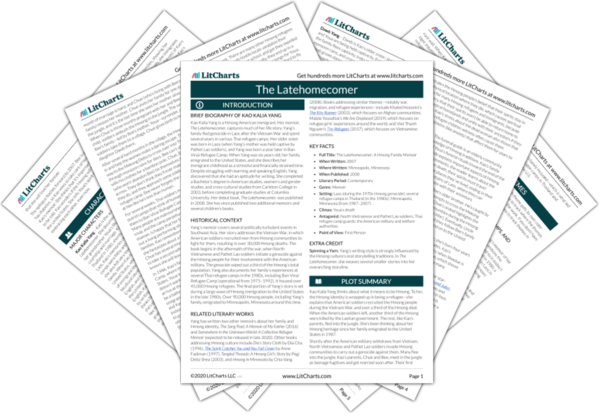The entire community shows up for Youa’s death, showing that she’s not only the head of her family, but also a leading pillar of the community. In this eulogy, Eng acknowledges what Yang has been hinting all along: that despite the Hmong’s emphasis on men in their communities, it’s often women (like Youa) who end up being their communities’ strongest, most competent, and most important assets.
